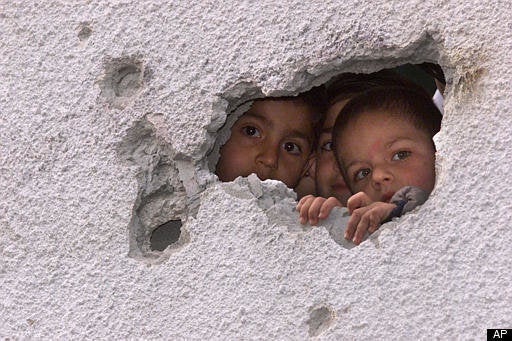
Censorship is often deemed justified in cases involving children, violence or both. As I reported in an earlier post, however, the U. S. Supreme Court ruled in June in a case involving children's access to violent video games that the First Amendment fully protects depictions of violence and that children clearly have First Amendment rights.
With respect to violence, the Court ruled that, in general, "government has no power to restrict expression because of its message, its ideas, its subject matter, or its content." This means that federal, state and local governments may not impose special restrictions on violent content.
With respect to children, the Court ruled that government does not have "a free-floating power to restrict the ideas to which children may be exposed." The First Amendment rights of children have been established in constitutional law since Tinker v. Des Moines (1969) and repeatedly reaffirmed.
The First Amendment only governs the U.S. government and so does not apply when the U.S. government is not involved. Regardless of who is the censor, however, censorship undermines intellectual freedom, which is no less important to children than to adults, and which includes creating and viewing depictions of violence.
On September 8, the Museum of Children's Art (MOCHA) in Oakland, California, canceled "A Child's View from Gaza," an exhibition scheduled to open just two weeks later after months of planning. The Berkeley-based Middle East Children's Alliance (MECA), which was working on the exhibition in partnership with MOCHA, protested strongly but to no avail.
The planned exhibit consisted of Gaza children's depictions of their experiences in relation to Operation Cast Lead, the Israeli bombing and invasion of the densely populated Gaza strip in winter 2008-09, which killed about 1400 Palestinians, including some 300 children. In crayon, pencil, and marker, the drawings show guns, tanks, missiles, explosions, blood, and Israeli soldiers.
The child artists of Gaza, informed about the cancellation, were disappointed that their art would not be seen. MECA remained determined that the art would indeed be seen, as close as possible to the intended site.
Meanwhile, the Jewish Federation of the East Bay exulted about the victory of Jewish groups over the Palestinian child artists. "Great news!" it Tweeted upon learning of the cancellation. "The 'Child's View From Gaza' exhibit at MOCHA has been canceled thanks to some great East Bay Jewish community organizing."
MOCHA claimed that complaints and pressure came not just from Jewish groups but also from others in the community. There was serious concern, it maintained, about exposing child visitors to depictions of violence.
The pictures do, indeed, expose viewers to unpleasant images of violence and its aftermath. To see the realities of violence in the world can be highly upsetting, and not just to children.
Nevertheless, the Supreme Court thought Americans, including American children with the aid of their own parents, could handle images of violence. There is no reason MOCHA should maintain a lower standard of intellectual freedom. MOCHA has, moreover, to its credit, maintained a higher standard in the past in exhibiting children's art on matters of violence and controversy.
For children who experience violence directly, one way to address the psychological trauma is for them to express themselves by drawing what they have seen, what they have heard about, and what's on their minds. Expression requires an audience, however.
Happily for the invisible children of Gaza, MECA was able to find an alternative location for the exhibit. There they can make their views visible. "A Child's View from Gaza" is now showing through November 27 in Oakland, within walking distance of MOCHA.
That's further than walking distance for most of us, but it leaves questions for all of us. Should victims of violence tell what happened to them? Should child victims of violence draw pictures of what happened to them? Do we want to see those pictures? Do we want our children to see them?
